The OSS Dirty Tricks Department: Umbrella Guns, Beano Grenades & Spies
American spymaster William 'Wild Bill' Donovan operated on the razor's edge in WWII. He'd set up the Office of Strategic Services but needed a scientist to head up the Dirty Tricks Department - an underhanded type who could equip American spies with a concealed knife to slit a guard's throat, a baseball-shaped bomb to blow up a locomotive, or a cyanide suicide pill to bite if they were captured alive.
Enter Stanley Lovell, a chemist and salty Yankee inventor raised near Boston who believed the impossible only took a bit longer. Lovell saw chemistry as modern-day magic. Wild Bill saw Lovell as Sherlock Holmes’ nemesis Professor Moriarty, the Napoleon of crime with hereditary tendencies of the most diabolical kind, John Lisle writes in The Dirty Tricks Department.
It was a match made in OSS intelligence heaven.
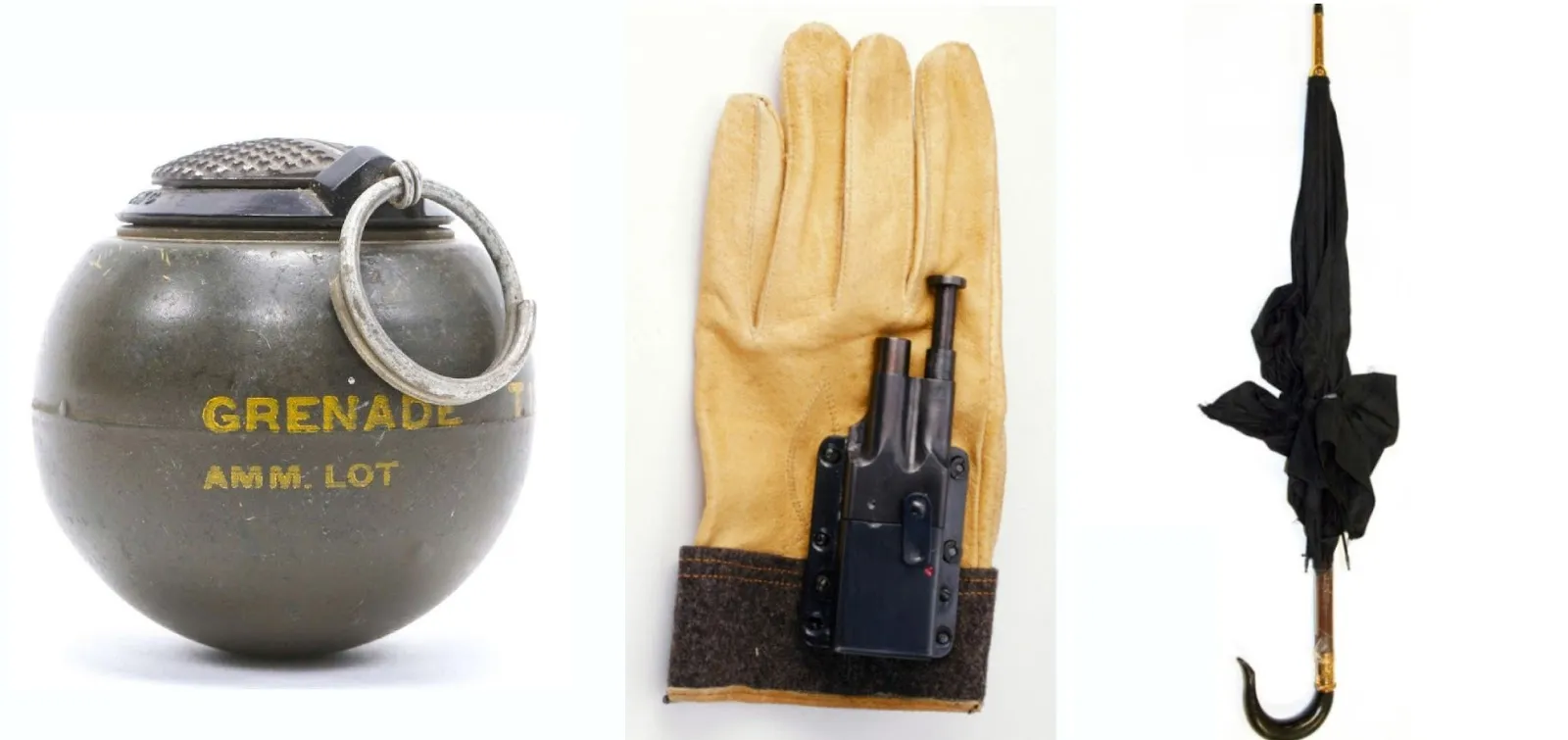
Division 19
Al Polson, a 24-year-old from Division 19, was in charge of developing the baseball-shaped hand grenade, one that exploded on impact instead of seconds after the pin was pulled. The Beano' grenade “stunned first and then sent little pieces of steel into their internal organs such as kidneys and heart,” Polson explained. “We loaded the Beano with TNT, which packed about twice the explosive force of a typical grenade.”
Polson was also the lead scientist on the umbrella gun: "Putting it right up against a guy's kidney and bam! It was gone. If you don't have a kidney, you're gone."
The glove pistol offered operatives an unseen advantage. Spies could have a gun at the ready while both hands were free. To fire the pistol, the operative pushed the plunger into an attacker’s body. Department 19 was also proud of its booby-trapped chairs activated with pressure. "You sit down in a chair," Lovell said with delight, "and go boom!"
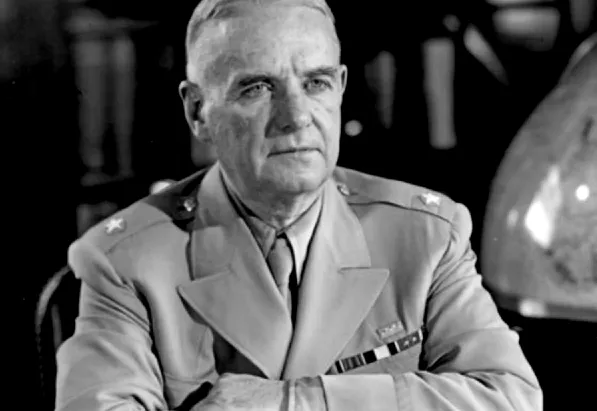
A SPY HQ with a handicap
Wild Bill enjoyed playing outrageous pranks to show off the inventions. The OSS head once snuck into President Franklin Delano Roosevelt’s Oval Office armed with a loaded gun and a bag of sand. As Roosevelt dictated a letter to his secretary, Donovan fired off 10 rounds into the sand; Roosevelt turned with the pungent odor of burnt gunpowder still in the air.
“He looked up with wide eyes and saw Donovan standing behind him with a smoking gun in his hand,” writes Lisle. Donovan wrapped the pistol in a handkerchief, handed it to the president, and introduced it as the OSS’s new silent, flashless firearm. Roosevelt accepted the gun, telling Donovan he was the only Republican he’d ever allow into the Oval Office with a gun.
Donovan and Lovell’s OSS unit expanded rapidly and needed a secret lab to develop their special weapons, one far away from prying eyes but close enough to the power brokers in Washington, D.C. With evident pleasure, they commandeered the 400-acre Congressional Country Club and golf course in Maryland.
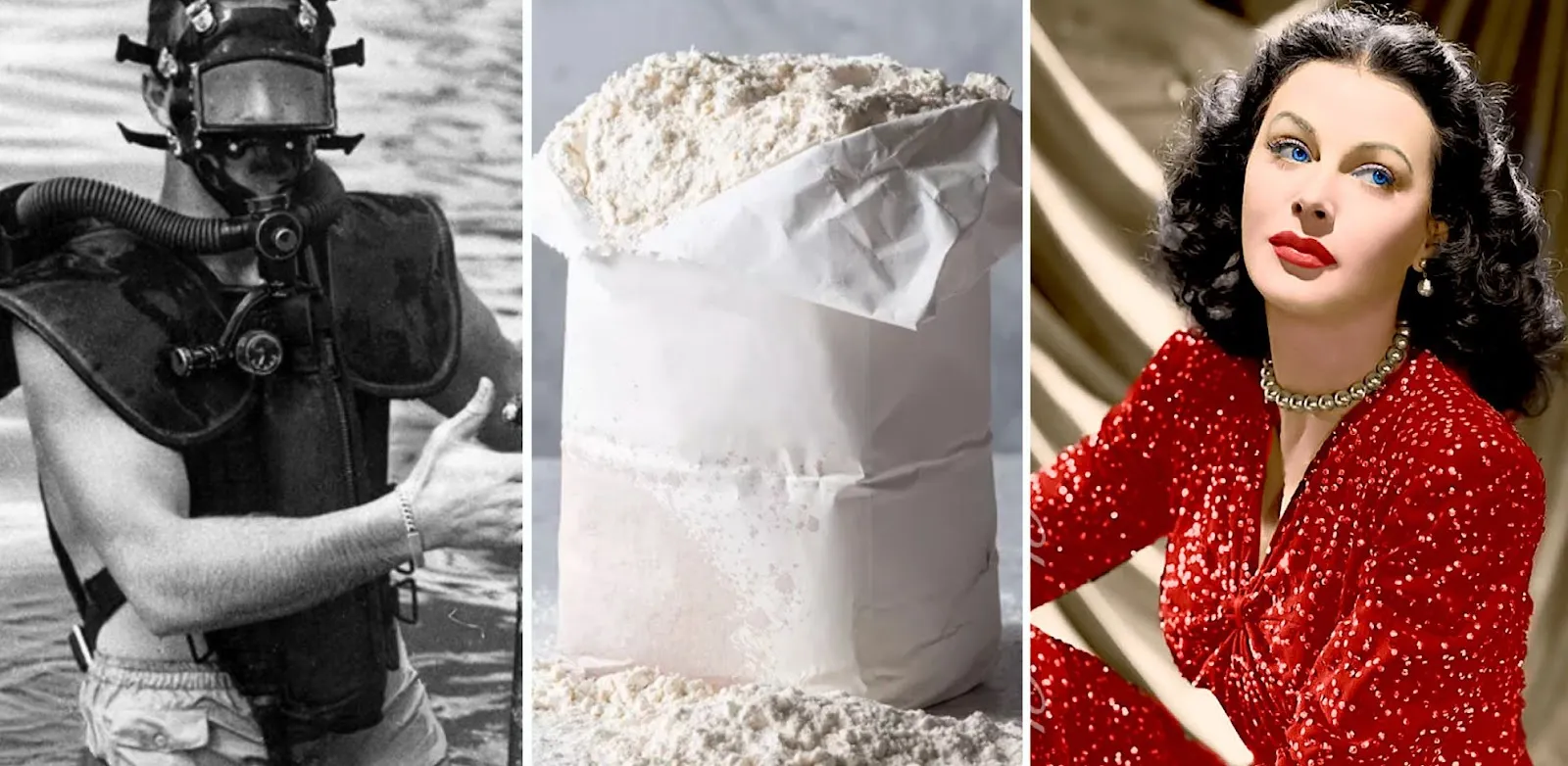
OSS: shock and awe
In addition to championing exploding coal, invisible ink, tasteless poisons, miniature cameras, and exotic knives, the OSS brought Christian J. Lambertsen on board after he developed an impressive underwater breathing apparatus. Dr. Lambertsen, who’d studied respiratory physiology at medical school, later renamed his device ‘SCUBA’ and according to the CIA archive the good doctor is responsible for most of the technology used today for US Combat Swimming Operations.
Perhaps the most famous Division 19 weapon was codenamed ‘Aunt Jemima’ after the American pancake mix. “The mixture had to be undetectable, safe to transport, and able to be baked into normal bread, biscuits, or muffins,” according to the US government National Archives. In reality, the mix was an explosive camouflaged as flour and trafficked through Japanese checkpoints to Chinese resistance fighters.
The ‘Hedy’ was another OSS crowd-pleaser - a small tube filled with pressed gallic acid and potassium chlorate. Lovell named it after Hollywood actress Hedy Lamarr, whose beauty apparently created a panic wherever she went. Operatives used the Hedy to create diversions. If dropped into a metal trashcan, it would emit a sudden shriek. Perhaps unsurprisingly, Wild Bill decided to surprise the Joint Chiefs with an impromptu Hedy demo in a meeting about boobytraps and incendiary devices.
The room's acoustics amplified the ear-piercing wail far beyond his expectations, however. "I saw two- and three-star Generals clawing and climbing to get through the room's single door," Donovan later recalled. When the demonstration was over, Donovan pulled Lovell aside for a quiet word: "Professor Moriarty, we overdid that one, I think."
"The brand new social experience where you activate your gaming skills as you train like a spy."
- TimeOut
Take on thrilling, high-energy espionage challenges across different game zones.


Bat bombs and cyanide
Stanley Lovell and the US team were helped by the British, who joined WWII in September 1939 in response to Hitler's invasion of Poland. As both France and England had declared war on Germany, they were already pros in the Dirty Tricks Department.
"What they teach you at Sabotage School will blow your mind," American OSS officer Frank Gleason boasted after training in Britain. Gleason learned how to destroy locomotives and power plant turbines, knock out communications systems and telephones, and to poison water - "Sh***y stuff like that - we were taught how to fight dirty."
Nothing was off the table in WWII. No idea was a bad idea if it worked and that included tear gas pencils, invisible inks, and the ‘En-Pen’ single-shot pistol that could be disguised as a pen or a cigarette.
Lovell even tested ‘bat bombs’ where the team attached small explosives to bats intending to release them in enemy territory.
There was also a pharmacy of pills: A-pills for travel sickness, B-pills as amphetamine pick-me-ups, E-pills for fast-acting anesthetics and an H-pill incendiary devices to mix with gasoline to make Molotov cocktails. K-pills contained morphine to knock an opponent out and L-pills held a fatal dose of potassium cyanide with the scent of almond butter.
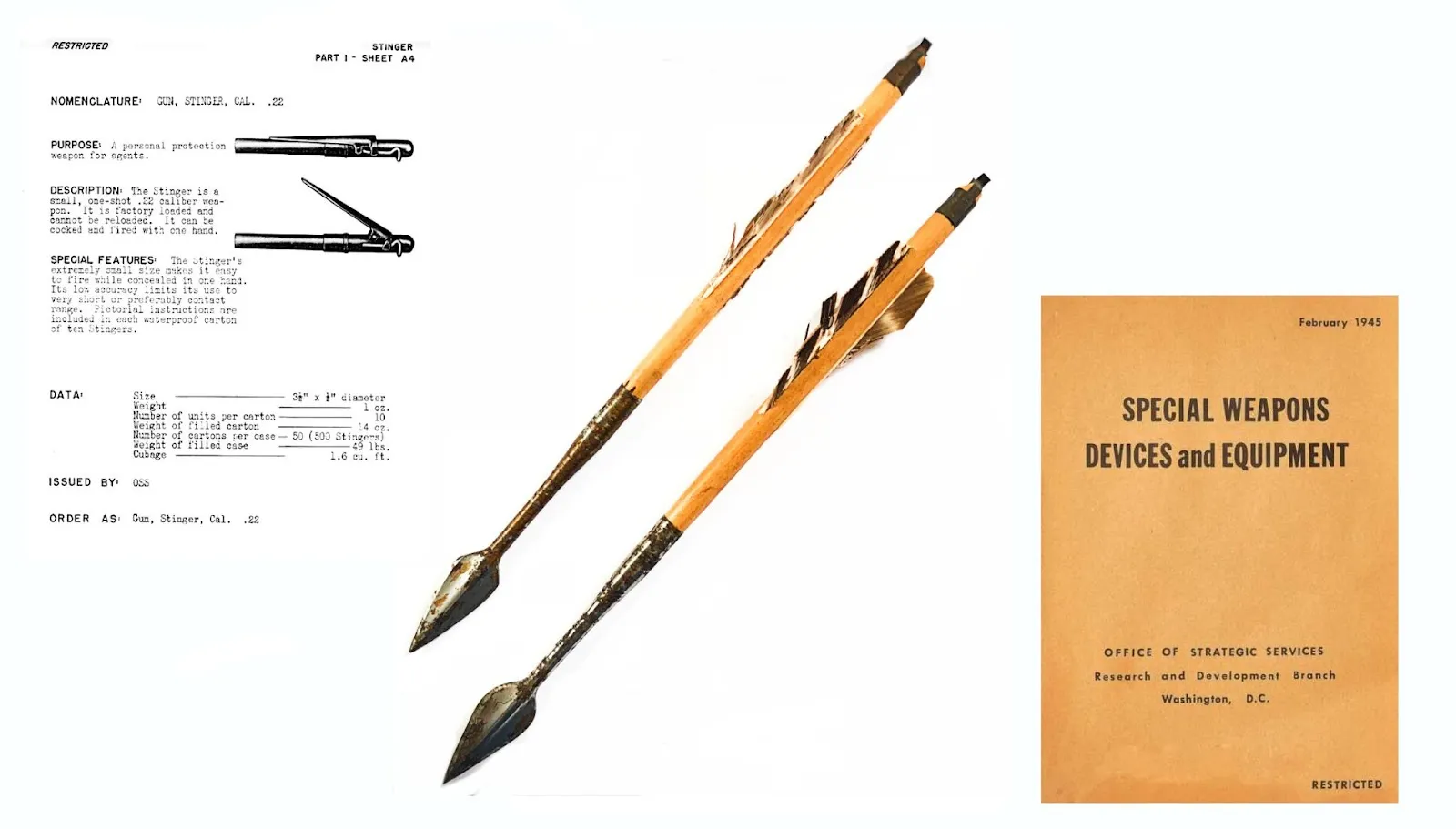
Silent but deadly
The OSS ‘Little Joe’ crossbows were designed for agents to use behind enemy lines where stealth was crucial. The silent operation of the crossbow gave agents an edge in situations where the noise of a conventional firearm would attract unwanted attention.
Lovell’s influence can be seen in the lightweight, compact design, making the Little Joe arrows portable and easy to transport for covert missions.
Lovell would have also helped author the OSS Special Weapons Devices and Equipment manual, a compilation of intelligence on explosives for demolition and sabotage; firearms for self-defense and combat; radios, cipher machines, and other communications equipment; and survival gear including compasses, maps, and first-aid kits.
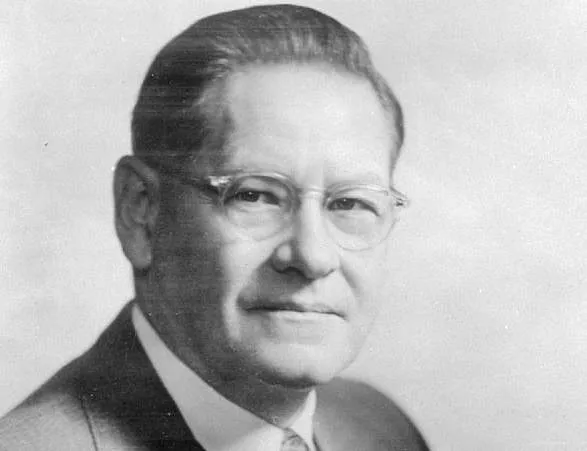
Lovell: Who Me?
As WWII drew to an end, Stanley Lovell hired Ernest Crocker, known as the ‘Man With the Million-Dollar Beak’, as a chemical engineer to focus on psychological warfare and flavor science. Crocker had a knack for recreating the world’s foulest odors and successfully synthesized the smell of foot odor and vomit. He also invented ‘Dog Drag’ to throw bloodhounds off the scent of an escaping agent.
Lovell wanted Crocker to create a new scent codenamed 'Who Me?' The plan was to coax children in China to spray the backsides of occupying Japanese officers to make it seem as if the officers had soiled themselves. Although 'Who Me?' was never used on the battlefield, some prankster stole the ‘perfume’ from a secure cabinet and sprayed it around the fragrant OSS laboratories.
When the time came to disband the OSS, President Harry Truman created the peacetime Central Intelligence Group, which soon became the Central Intelligence Agency. In 1953, the CIA Technical Services Staff was headed by Lovell’s successor, Sidney Gottlieb, who oversaw many projects including MK-Ultra mind control.
“Under Gottlieb’s direction,” Lisle writes, “MK-Ultra took the mind control experiments to a new level.”
SPYSCAPE+

Join now to get True Spies episodes early and ad-free every week, plus subscriber-only Debriefs and Q&As to bring you closer to your favorite spies and stories from the show. You’ll also get our exclusive series The Razumov Files and The Great James Bond Car Robbery!


Gadgets & Gifts
Explore a world of secrets together. Navigate through interactive exhibits and missions to discover your spy roles.
Your Spy Skills
We all have valuable spy skills - your mission is to discover yours. See if you have what it takes to be a secret agent, with our authentic spy skills evaluation* developed by a former Head of Training at British Intelligence. It's FREE so share & compare with friends now!
* Find more information about the scientific methods behind the evaluation here.


Stay Connected
Follow us for the latest
TIKTOK
INSTAGRAM
X
FACEBOOK
YOUTUBE